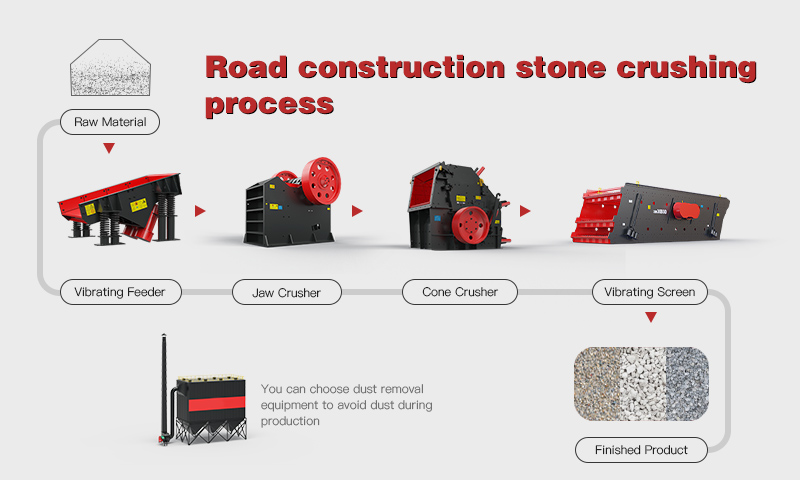Author:FTM Date:2024/03/16
In road construction, stone is a crucial building material with a wide range of applications. Commonly used stones in engineering projects include granite, gneiss, diorite, sandstone, and limestone. However, the types of paving stones required can vary depending on the specific road construction. Below is an introduction to three different types of roads, the stones they require, and their processing methods.

Pebbles: Named for their resemblance to goose eggs, pebbles are natural stones sourced from ancient riverbeds that have been uplifted by tectonic movements millions of years ago. Over time, these stones are transported by mountain floods and rivers, undergoing constant pressure and friction. This process rounds off their edges, and the pebbles are buried underground for millions of years. Due to the infiltration of various elements, pebbles exhibit a range of colors and shades. Pebble-paved landscape paths are diverse and can enhance the aesthetic and functional appeal of courtyards.
Gravel: Gravel is formed through the weathering of exposed rocks and accumulates at the foothills or mountain fronts. Alternatively, it is produced when rocks are broken by water erosion, transported, and deposited by rivers. Natural gravel is commonly used in courtyard landscaping for paving. Various sizes of black gravel, such as 1-3 cm, 2-4 cm, 0.6-0.9 cm, and 0.4-0.8 cm, are available. These different sizes can be used for pond borders, garden landscaping designs, and more. Gravel is particularly suitable for parks, communities, courtyards, and gardens, where it can be used for paving paths, landscaping around ponds, and constructing small pathways in lawns. Gravel Crushing Production Line
The construction of highways requires a large amount of crushed stone aggregates, predominantly limestone and basalt. To ensure the quality of highways, relevant authorities have stringent standards for the sand and gravel aggregates used in highway construction. FTM Company offers high-quality crushing equipment with excellent discharge particle shape, capable of meeting these standards.
1.Limestone
Limestone, Relatively soft, is a calcium carbonate rock primarily composed of calcite. It is mainly formed in shallow marine environments. Limestone Crushing Production Line:
2.Basalt
Basalt is a type of volcanic rock formed from solidified lava. It is an igneous rock, meaning it is formed through the cooling and solidification of magma or lava. Basalt is one of the most common rock types on Earth and can be found on land and in the ocean floors worldwide.
The use of ballast on railways plays a crucial role in protecting the roadbed, facilitating track maintenance and repair operations, correcting the longitudinal and vertical alignment of the track, providing drainage, and acting as a buffer. Essentially, ballast ensures the safe and smooth operation of the railway tracks. Granite and basalt are typically chosen for railway ballast. To be used, these stones must meet specific requirements in terms of needle-shaped and flaky particles, weathered particles, and surface cleanliness.
Granite is an intrusive rock belonging to the acidic (SiO2 > 66%) igneous rock category. It is the most common type of rock in this category, often appearing in light pink, light gray, or gray-white colors. It has a medium to coarse grain, fine grain structure, and massive texture. Some granite exhibits porphyritic, spherical, or gneiss-like structures.
The General Crushing Progress
